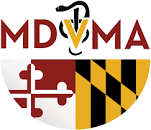2024 Summer Conference
Speakers
Ashore Resort & Beach Club - Ocean City, MD
June 20-22, 2024
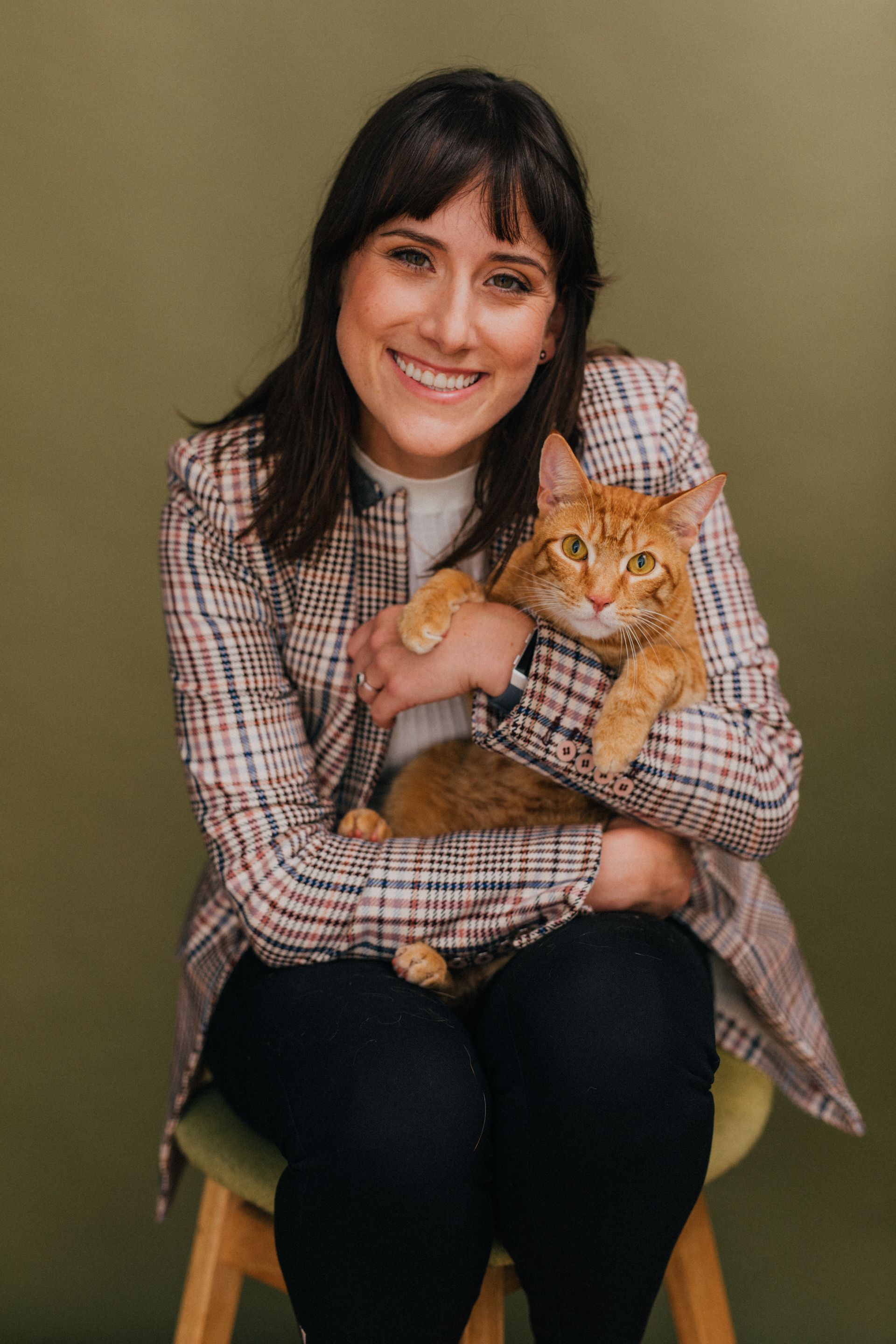
Martha Cline
DVM, DACVIM
Nutritional Management of Gastrointestinal Conditions
Nutritional Management of Food Allergies
Nutritional Management of Urinary Conditions
-
Session Description
Nutritional Management of Canine & Feline Gastrointestinal Conditions
Dietary approaches to gastrointestinal signs should be systematic following a complete nutritional assessment. This lecture will review several dietary approaches gastrointestinal disease. Recommendations will be provided on how to implement these diet strategies and other nutrient interventions.
Nutritional Management of Atopy & Food Allergies
Nutritional interventions can help make it easier to manage chronic skin conditions from atopy and food allergies. This lecture will review the dietary approaches for clinical success.
Nutritional Management of Canine & Feline Urinary Conditions
Lower urinary tract diseases in the dog and cat can be mitigated or prevented through proper diet selection. This lecture will review common lower urinary tract diseases and discuss nutrition management for clinical success.
-
Speaker Bio
Martha Cline is a graduate of the University of Tennessee College of Veterinary Medicine. She completed a rotating internship at Oradell Animal Hospital in New Jersey and then returned to the University of Tennessee for a small animal clinical nutrition residency. She is board certified with the American College of Veterinary Internal Medicine (Nutrition). In December 2021, she joined Nestlé Purina PetCare and currently serves in the role of Senior Manager for Veterinary Technical Communications. She previously practiced clinical nutrition full time at Red Bank Veterinary Hospitals in New Jersey (2013-2021) where she still provides clinical support. In 2021, she served at the Chair of the AAHA Task Force for the Nutrition and Weight Management Guidelines.
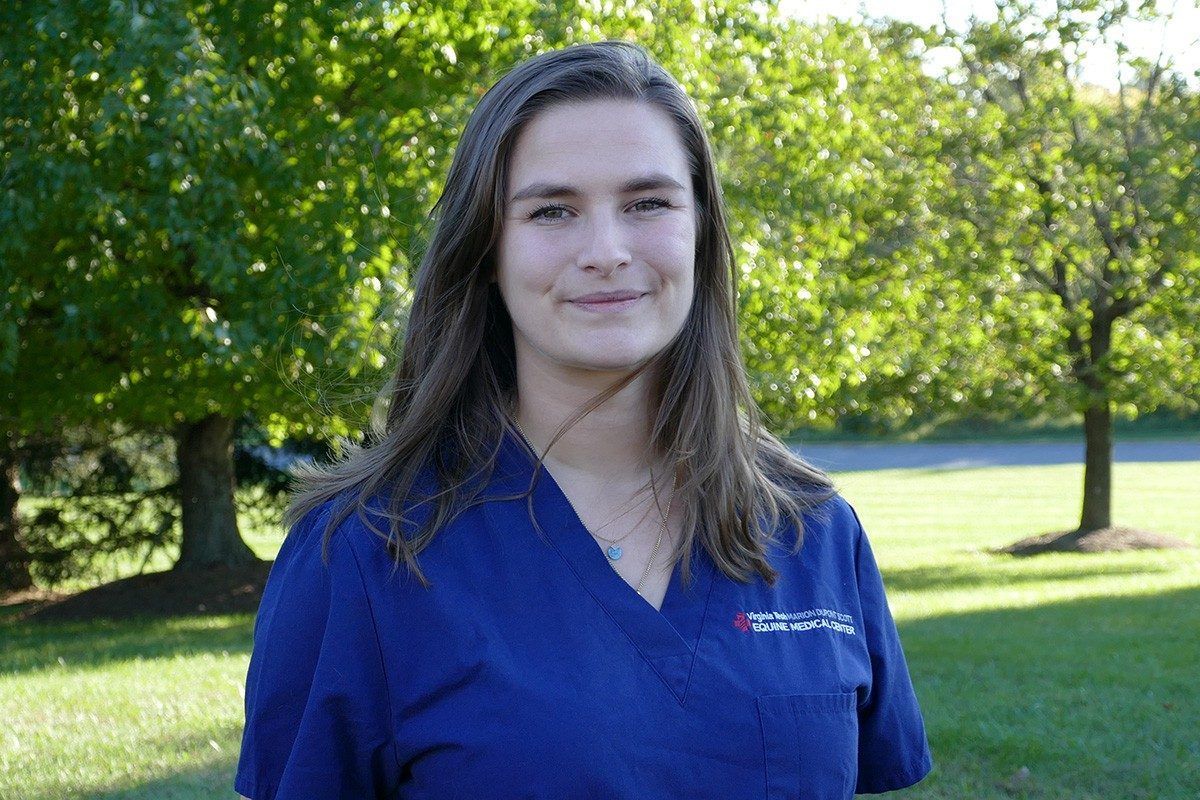
Sophie Boorman
BVetMed, MS, DACVS-LA
Skull and Jaw Fracture Management
Wound Management/Skin Grafts
Reproductive Surgery - Laparoscopy
-
Session Description
Skull and jaw fracture management
A brief overview of mandibular and maxilla fractures in horses - diagnosis, first aid, surgical intervention and aftercare
Wound management
An overview of wound healing physiology and how this can be applied to decision making to improve outcomes in wound management
Reproductive surgeries
Overview of the most common reproductive surgeries performed at our referral hospital including cesearean section, laparoscopic ovariectomy, cryptorchidectomy, uterine torsion and tear management, fistula repair and urethral extension
-
Speaker Bio
After graduating from RVC in 2016 I moved to the US to complete internships at Hagyard Equine, KY, then University of Pennsylvania, PA. I stayed at New Bolton to work in the translational orthopedic research laboratory for a further year, before beginning my surgery residency at Auburn University, AL. Following this, I started working at Marion duPont Scott Equine Medical Center, Virginia Tech, in October 2022. I became boarded in Large Animal Surgery in February the following year.
Area(s) of research or clinical special interest: My clinical and research interest is primarily in orthopedics, including fracture management and arthroscopy. I also enjoy upper respiratory and soft tissue surgery.
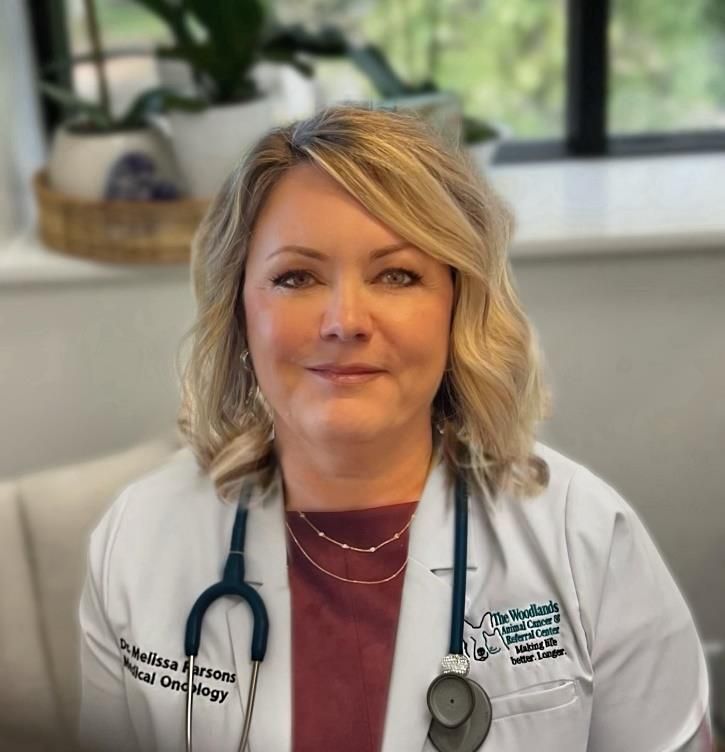
Melissa Parsons
DVM, DACVIM, Oncology
Paws and Progress: Advancements in Lymphoma Treatment for Canine and Feline Large Cell Lymphoma
Bladder Battles: Unveiling the Latest in Canine Transitional Cell Carcinoma Care
Caring Compassionately: Preventing and Managing Chemotherapy Side Effects in Dogs and Cats
-
Session Description
Paws and Progress: Advancing Lymphoma Treatment for Canine and Feline Large Cell Lymphoma
Large cell lymphoma is one of the most common cancers diagnosed and treated in our dog and cat patients and can present in both " healthy" and " sick" patients. This presentation reviews both established standards and emerging novel approaches to the diagnosis, treatment, and supportive care for pets diagnosed with large cell lymphoma. Attendees will gain valuable insights into the current state of lymphoma management, including innovative therapies, diagnostic techniques, and strategies for optimizing patient outcomes and quality of life. With a focus on progress and hope, this presentation aims to empower veterinary professionals with the knowledge and tools needed to make a meaningful difference in the lives of animals and their families affected by this disease.
Bladder Battles: Unveiling the Latest in Canine Transitional Cell Carcinoma ( TCC) Care
TCC is a challenging and often devastating cancer affecting the urinary tract of canines. This presentation explores the most recent innovations in diagnosis, treatment modalities, and supportive care strategies for dogs battling TCC. Attendees will gain valuable insights into the latest research, and emerging therapies, aimed at improving outcomes and enhancing the quality of life for canine patients diagnosed with this aggressive disease. With a focus on innovation, outcomes, and quality of life, this presentation aims to empower veterinary professionals with the knowledge and tools to confidently battle bladder cancer in their patients.
Caring Compassionately: Preventing and Managing Chemotherapy Side Effects in Dogs and Cats
Chemotherapy is often an essential component of cancer treatment in animals, but it can come with a range of potential side effects that can impact the well-being of our patients. This presentation aims to equip veterinary professionals with the knowledge and tools needed to provide optimal care for pets undergoing chemotherapy treatment. We will review proactive strategies for preventing and minimizing chemotherapy-related side effects, including nausea, vomiting, fatigue, and immune suppression. Attendees will also learn about the latest evidence-based approaches to supportive care, including nutritional support, pain management, and monitoring techniques, aimed at enhancing patient comfort and quality of life throughout the treatment journey.
-
Speaker Bio
Dr. Parsons-Doherty has been a Diplomate of the American College of Veterinary Internal Medicine since 2013. She is Canadian and received her Doctor of Veterinary Medicine at the Atlantic Veterinary College in Prince Edward Island, Canada. She completed a Rotating Internship, Medical Oncology Internship and Residency in the USA. After completing her training in the United States, she briefly returned to Canada and practiced at the Ontario Veterinary College. In 2014, Dr. Parsons-Doherty returned to the US and settled in the Houston area. In 2019, Dr. Parsons-Doherty took the leap and established the first Veterinary Specialty hospital in the Houston area dedicated to the care of dogs and cats with cancer, Pearland Animal Cancer and Referral Center. In May 2023, the second location, The Woodlands Animal Cancer and Referral Center opened. While practicing Veterinary Medical Oncology she has been committed to accessing and providing care for working dogs with cancer. She has recently joined the board of Project K-9 Hero, established to serve those dogs who protected our families, our communities, and our America, as well as that of DogsLife, another 501c3 committed to funding cancer care in family pets. Dr. Parsons-Doherty has
made her home in Houston with her husband, two German Shepherds, one hound mix, and six cats.
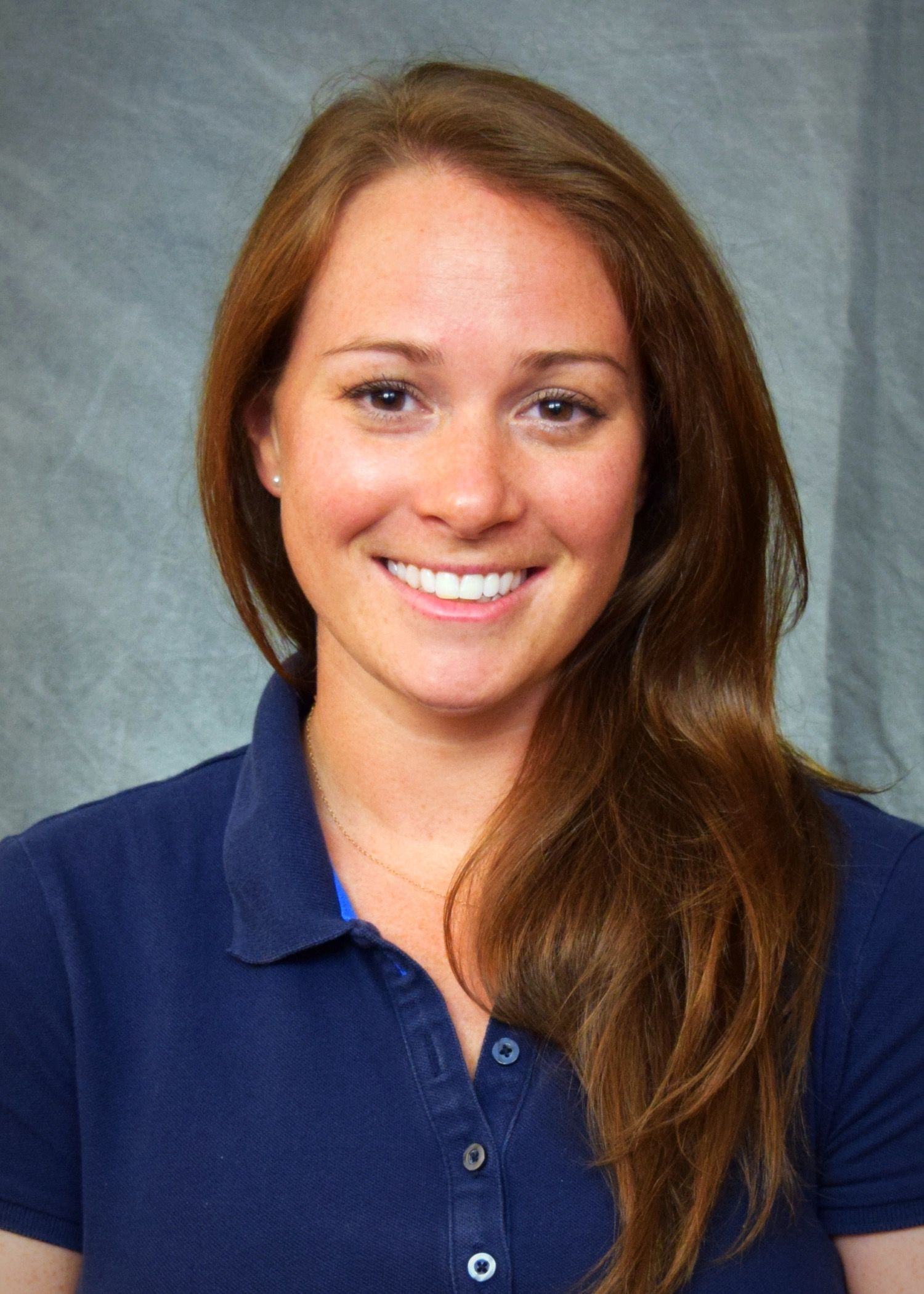
Lauren Trager
DVM, MS, Dipl, ACVSMR
What’s New In Equine Rehabilitation
Diagnosis and Treatment of Proximal Suspensory Ligament Desmitis
Diagnostic and Therapeutic Options for Equine Back Pain - Imaging
Diagnostic and Therapeutic Options for Equine Back Pain - Treatment
Diagnostic and Therapeutic Options for Equine Back Pain - Rehab
-
Session Description
What’s New In Equine Rehabilitation (1 hour) A summary of new literature and the latest in equine rehabilitation techniques.
Diagnosis and Treatment of Proximal Suspensory Ligament Desmitis (2 hours)
A discussion of how to diagnose and treat forelimb and hindlimb proximal suspensory ligament desmitis in horses. Special consideration will be given towards how to utilize diagnostic blocking and how to perform and interpret imaging.
Diagnostic and Therapeutic Options for Equine Back Pain (3 hours)
A discussion of how to diagnose and treat thoracolumbar pain in the horse. The focus of this seminar will be on practical imaging of the thoracolumbar spine and treatment, including ultrasound guided injections, shockwave therapy and rehabilitation strategies.
-
Speaker Bio
Dr. Lauren Trager-Burns is originally from Maryland and received her DVM from the VA-MD College of Veterinary Medicine. She completed a sports medicine and imaging internship at Virginia Equine Imaging in Middleburg, VA followed by a residency in sports medicine and rehabilitation. She is a diplomate of the American College of Veterinary Sports Medicine and Rehabilitation and is currently a Clinical Assistant Professor of equine sports medicine at VA-MD CVM. Dr. Trager-Burns enjoys working on challenging lameness and poor performance cases, diagnosing and treating neck and back pain and anything that involves advanced imaging. Dr. Trager-Burns enjoys spending time with her husband, Travis, and their daughters, Maddie (4 years) and Margot (6 months), on their farm and competing in eventing.

Ivan Ravera
DVM, MSc, PhD, ECVD, Diplomate, EBVS
Should We Prescribe Antibiotics? An Update on the Treatment of Canine Pyoderma
Evidence-based Update in the Diagnosis and Treatment of Cat Hypersensitivities
Cutaneous Manifestation of Interal Diseases
-
Session Description
Should We Prescribe Antibiotics? An Update on the Treatment of Canine Pyoderma
Over the past decades, antimicrobial resistance has been increasing. Currently, the prescription of systemic antibiotics has been put under scrutiny in different fields such as animal production and veterinary medicine. In this lecture we will address the most frequent causes of bacterial resistance, the risk factors for its acquisition, considerations prior to treatment, type of treatments, follow-up, and prevention.
Evidence-based Update in the Diagnosis and Treatment of Cat Hypersensitivities
This lecture will focus on current treatments for hypersensitivity not induced by fleas or dietary proteins based on scientific evidence. We will discuss the effectiveness of antihistamines, glucocorticoids, cyclosporine, oclaitinib, and immunotherapy. Additionally, we will address non-conventional treatments in the management of feline pruritus.
Cutaneous Manifestation of Internal Diseases
This lecture will discuss diseases of internal origin that may reflect skin lesions before, during, or after their appearance. In addition, we will update old diseases and concepts, and address some dermatological emergencies.
-
Speaker Bio
Dr. Ravera was born in Buenos Aires, Argentina, in 1982. He obtained his DVM degree in Argentina in 2006. He traveled to Barcelona, Spain, to start his residency program in veterinary dermatology in 2008. In 2011 he obtained a master’s degree in advanced Immunology. In 2012 he started his Ph.D. entitled “Deconstructing Canine Demodicosis”. In 2015 he obtained his Board certification in veterinary dermatology from the European College of Veterinary Dermatology and received his Ph.D. degree. After working in private practice, he got a position at a private University as an Assistant Professor in Valencia, Spain. In 2022 he moved to the US to work as an Assistant Professor at Louisiana State University and after two years, he decided to move to Virginia to work as an Assistant Professor at Virginia Tech. He is the Chair of the Education Committee of the Latin American College of Veterinary Dermatology and a funder member of the VetDermSustain Group.

Rachel Rasmussen
DVM, DACVIM
Oncology Tips for the Primary Care Veterinarian
Mast Cell Tumors: Diagnostic and Treatment Considerations
Novel Diagnostic and Treatment Options in Veterinary Oncology
-
Session Description
Oncology Tips for the Primary Care Veterinarian
A variety of tips and tricks for the primary care veterinarian when faced with a suspect or newly diagnosed cancer patient. This presentation will cover how to approach a newly identified mass, how to interpret biopsy results, when to recommend oncology referral, and considerations for mutual patients receiving chemotherapy.
Mast Cell Tumors: Diagnostic and Treatment Considerations
An overview of mast cell tumors in dogs, what diagnostic approaches to consider, along with a thorough review of treatment options for this very common cancer diagnosis.
Novel Diagnostic and Treatment Options in Veterinary Oncology
A review of the latest diagnostics and treatments available within veterinary oncology. This presentation will cover new therapies for mast cell tumors and lymphoma, immunotherapies, supportive medications, and DNA sequencing for the use of cancer diagnosis and personalized medicine.
-
Speaker Bio
Dr. Rasmussen is a proud Maryland native. Dr. Rasmussen received her veterinary degree from Western University of Health Sciences in 2011. She completed a rotating internship at Colorado State University followed by a medical oncology residency at the University of Wisconsin. Upon completion of her residency, Dr. Rasmussen returned to Maryland to establish the oncology service at what is now BluePearl Rockville. She currently serves as the medical director in addition to her clinical duties.

Laura Harvey
DVM, DACVIM
That's Not a Disk: Diagnosis and Management of Myasthenia Gravis
Don't Stop Believin': Traumatic Brain Injuries Can Have Good Outcomes!
Shake, Rattle and Roll: An Approach to Vestibular Diseases
-
Session Description
That's not disk.... diagnosis and management of acquired myasthenia gravis
This lecture will be an overview of acquired myasthenia gravis, one of our more recognizable neuromuscular diseases in small animals. We will discuss pathophysiology, clinical presentations of the disease, diagnosis, treatment, and prognosis for acquired myasthenia gravis.
Don't stop believin': traumatic brain injuries can have good outcomes
Head trauma and traumatic brain injuries (TBIs) are common with polytrauma cases. While the initial presentation of these cases can be intimidating, many patients can do well with aggressive treatment. This lecture will outline the pathophysiology of TBI, clinical assessment of TBI, treatment modalities, and overall prognosis for TBI.
Shake, rattle and roll: a clinical approach to vestibular diseases
The goal of this talk is to give clinicians a framework for approaching patients with vestibular diseases. We will discuss the pathophysiology of vestibular diseases, examination findings and neurolocalization, creating a differential diagnosis list, and common vestibular diseases. We will also discuss when patients with vestibular diseases should be referred for specialty care, and treatment strategies for management of vestibular diseases based on the patient's localization.
-
Speaker Bio
Dr. Harvey received her B.S. in ecology and evolutionary biology from Cornell University, graduating cum laude with distinction in research. She graduated from the Tufts Cummings School of Veterinary Medicine in 2012. She went on to complete a 1-year rotating internship in small animal medicine and surgery at the University of Georgia before returning to Tufts for her 3-year neurology and neurosurgery residency. Dr. Harvey’s research focused on the use of procarbazine for the treatment of meningoencephalitis of unknown etiology (MUE). During her residency, Dr. Harvey was recognized as the Resident of the Year for routinely going above and beyond for her patients and for her students. She was also awarded the Resident Award for Excellence in Teaching. Dr. Harvey obtained board-certification from the American College of Veterinary Internal Medicine (ACVIM) in neurology and neurosurgery in 2016 upon completion of her residency. She attended the ACVIM Advanced Neurosurgery course in 2017.
Dr. Harvey moved to Annapolis in 2016 to practice full-time as a veterinary neurologist. In 2019, the Maryland Veterinary Medical Association awarded her the Good Doctor Award for her dedicated veterinary medical care and for providing compassion and kindness towards her clients, patients, and the community. Dr. Harvey has remained active in the veterinary community through involvement with ACVIM committees and providing continuing education lectures at conferences throughout the state. Dr. Harvey enjoys teaching and mentoring, and she served as a neurology specialty internship director for 2021-2022.
Dr. Harvey enjoys all aspects of neurology, with particular interest in neurosurgery, pain management, and management of immune-mediated neurological diseases. When she isn’t at work, Dr. Harvey enjoys spending quality time with her family, and her Brussels Griffon, Kiwi.

Erin Butler
RVT, CVPM
Title Protection? New Legislation in Maryland
Be the Local Hero! Local Anesthesia Pro Tips
Effects of the Human Animal Bond on the Veterinary Professional
-
Session Description
Title Protection? - New Legislation in Maryland
Veterinary Technicians will have a better understanding of the legal provisions that will be set into place differentiating jobs which a Registered Veterinary Technician can do versus a non-registered Veterinary Technician in the state of Maryland. These provisions will be put into effect in October of 2024.
Be the Local Hero! - Local Anesthesia Pro Tips
Veterinary Technicians will be able to identify various types of local anesthetic blocks they can utilize to reduce their patients’ pain scores without having to administer higher doses of systemic pain medications.
Effects of the Human Animal Bond on the Veterinary Professional
Veterinary Technicians will be able to identify the recognizable components of the human animal bond and how this bond can affect the veterinary professional. Learn what to do when someone is having trouble due to this bond whether it be yourself, a co-worker, or a client.
-
Speaker Bio
Since 2007, Erin has been engulfed in the veterinary field. Erin has earned her A.A.S. in Veterinary Technology, her B.B.A. in Veterinary Services Administration, her MS in Management and Leadership, and also became a Certified Veterinary Practice Manager through the VHMA. While Erin worked in both Ophthalmology and Emergency medicine for several years of her career, she decided to enter the higher education field in 2016. While working at the Community College of Baltimore County in the Veterinary Technology Program, Erin has developed partnerships with various rescues and groups to offer free or discounted services through the college’s animal health clinic which she manages. In the classroom setting, Erin thoroughly enjoys teaching Surgery and Anesthesia courses. Erin is RECOVER BLS/ALS, and Fear Free Certified. She also sits on the advisory board of Ashworth College’s Veterinary Technology Program. Outside of work, Erin spends time with her two daughters, two dogs, and one cat. Her hobbies include riding motorcycles, kayaking, and watching forensic files.
Area(s) of research or clinical special interest: Higher Education and Anesthesia
Award you are most proud of: Distinguished Veterinary Technician Award – MDVMA 2018
Current place of employment: Community College of Baltimore County
Favorite pet(s): Blossom and Phil (Dogs), Clover (Cat)
Family/Children: 2 daughters

Daniel Schultz
BVM&S
HPAI Preparedness and Response 2022-2024 Lessons Learned
The Importance of Veterinarians in Pandemic Preparedness and Response: Lessons Learned from COVID and HPAI
-
Session Description
HPAI Preparedness and Response 2022-2024 Lessons Learned
General overview of avian influenza across various states and a variety of species to include current events in diary cattle and cat.
The Importance of Veterinarians in Pandemic Preparedness and Response: Lessons Learned from COVID and HPAI
Lessons learned over time can aide public health and community medicine in deriving the most effective approaches to control and eradicate diseases. Utilizing a One Health approach is critical and essential for ideal successful management in either or both in the case of zoonotic disease control and prevention. Over the last few decades several new and innovative biosecurity measures have been developed and implemented to respond to the risks inherent in the production practices such as isolation units, focusing on high-risk populations, risk-based surveillance, pooled testing, environmental monitoring, enhancing the cleaning and disinfection procedures. During the peak of COVID-19, these measures could have been universally applied to high -risk human populations such as the immune-compromised and elderly and should be considered in the future preparedness and response plans.
-
Speaker Bio
Dr. Daniel Schultz graduated from the Royal (Dick) School of Veterinary Studies in Edinburgh, Scotland in 2015. He worked in a mixed practice veterinary clinic from 2015 through 2022, where he worked on cats and dogs, rabbits, small ruminants, pigs, and backyard poultry. He joined USDA APHIS Veterinary Services in the summer of 2022 where he works as a field Veterinary Medical Officer.

India Howard
DVM, MS
Animal Health Certification for International Travel and Export
The Importance of Veterinarians in Pandemic Preparedness and Response: Lessons Learned from COVID and HPAI
-
Session Description
Animal Health Certification for International Travel and Export
Help to identify various agencies and steps involved in the health certification process for Category I animals, provide tips on how to apply proper principles to accurately complete health certificate request with confidence, source current import/export information for Category I animals traveling interstate or internationally as well as discussion of current regarding various USDA regulated species.
The Importance of Veterinarians in Pandemic Preparedness and Response: Lessons Learned from COVID and HPAI
Lessons learned over time can aide public health and community medicine in deriving the most effective approaches to control and eradicate diseases. Utilizing a One Health approach is critical and essential for ideal successful management in either or both in the case of zoonotic disease control and prevention. Over the last few decades several new and innovative biosecurity measures have been developed and implemented to respond to the risks inherent in the production practices such as isolation units, focusing on high-risk populations, risk-based surveillance, pooled testing, environmental monitoring, enhancing the cleaning and disinfection procedures. During the peak of COVID-19, these measures could have been universally applied to high -risk human populations such as the immune-compromised and elderly and should be considered in the future preparedness and response plans.
-
Speaker Bio
Dr. India Howard is native of Mobile, Alabama where she developed her love for seafood. While focusing on ruminant health and sustainable options for small-scale farmer in my Master’s program, India explored feed and land management alternatives. Dr. Howard began her career in regulatory medicine through an internship awarded to the time her doctoral program. Her education and tactical experience have helped her develop capabilities to coalesce private veterinary practice and policy regulations established for animal disease traceability and surveillance. India serves as a Veterinary Medical Officer in northern Virginia, Maryland and Delaware facilitating a multitude of tasks missioned to safeguard our global agriculture and economy in support of live animal health. Some of Dr. Howard’s hobbies include gardening, cooking southern cuisine and spending quality time with her family.
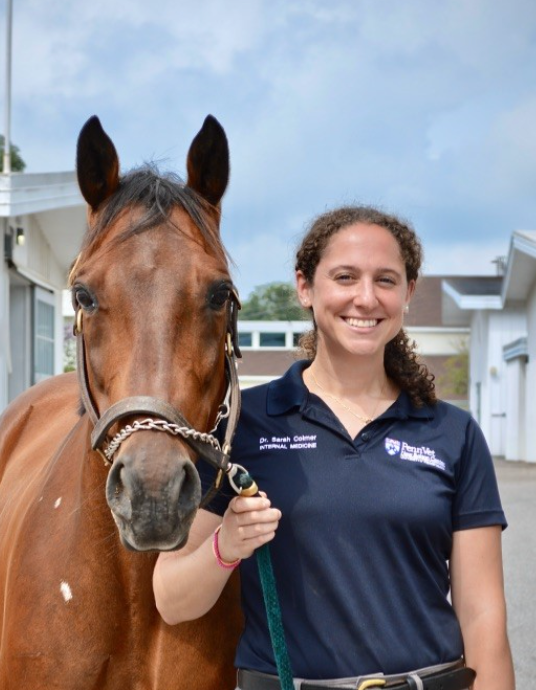
Sarah Colmer
VMD, DACVIM
Back to Basics: The Equine Neurological Evaluation
A Horse Walks into a Bar: Equine Neurologic Trauma
Let's Get Ready to Stumble: Common Causes of Spinal Ataxia
From Head to Tail: Equine Degenerative Myeloencephalopathy
What's Got You Down?: Evaluating and Managing the Acutely Recumbent Horse
GLUTE-en Free: Equine Muscle Diseases
-
Session Description
Back to Basics: The Equine Neurological Evaluation
This discussion will review how to perform a systematic neurological evaluation and neurolocalization, with detailed overview of cranial nerve and gait evaluation procedures, and discuss difficult cases that may have components of both ataxia and lameness.
A Horse Walks into a Bar: Equine Neurologic Trauma
This discussion will cover the basics of equine traumatic brain and spinal cord injury, including diagnostics, stabilization methodologies and when to refer.
Let's Get Ready to Stumble: Common Causes of Spinal Ataxia
This discussion will review the three most common causes of spinal (general proprioceptive) ataxia in the horse, including cervical vertebral stenotic myelopathy, equine protozoal myeloencephalitis and equine neuroaxonal dystrophy / degenerative myeloencephalopathy and their associated diagnostic procedures.
From Head to Tail: Equine Degenerative Myeloencephalopathy
Equine degenerative myeloencephalopathy and equine neuroaxonal dystrophy are some of the most frustrating and devastating neurologic conditions in the horse. This discussion will review how these horses present, how they are diagnosed and discuss more recent research updates.
What's Got You Down? Evaluating and Managing the Acutely Recumbent Horse
This discussion will cover the most common causes of collapse and recumbency and review management of the downer horse.
GLUTE-en Free: Equine Muscle Diseases Polysaccharide storage myopathy, myofibrillar myopathy, vitamin E-responsive myopathy and exertional rhabdomyolysis are some of the more common equine myopathies, making them worthy of discussion in terms of their presentation, diagnosis and management.
-
Speaker Bio
Sarah F. Colmer, VMD, DACVIM, graduated from the University of Pennsylvania School of Veterinary Medicine in 2017 and completed internships at Mid-Atlantic Equine Medical Center in New Jersey and Penn Vet's New Bolton Center prior to becoming board-certified in Large Animal Internal Medicine at New Bolton Center in 2022. She is currently a Fellow in Neurology at Penn Vet's New Bolton Center and Matthew J. Ryan Hospitals. Sarah has passions for clinical cases, teaching and research alike. In 2023, Sarah was the recipient of the graduating veterinary class’s Best Lecturer and Best New Bolton Center Instructor awards and recently received the 2023 and 2024 William B. Boucher Awards for Outstanding Teaching at New Bolton Center.
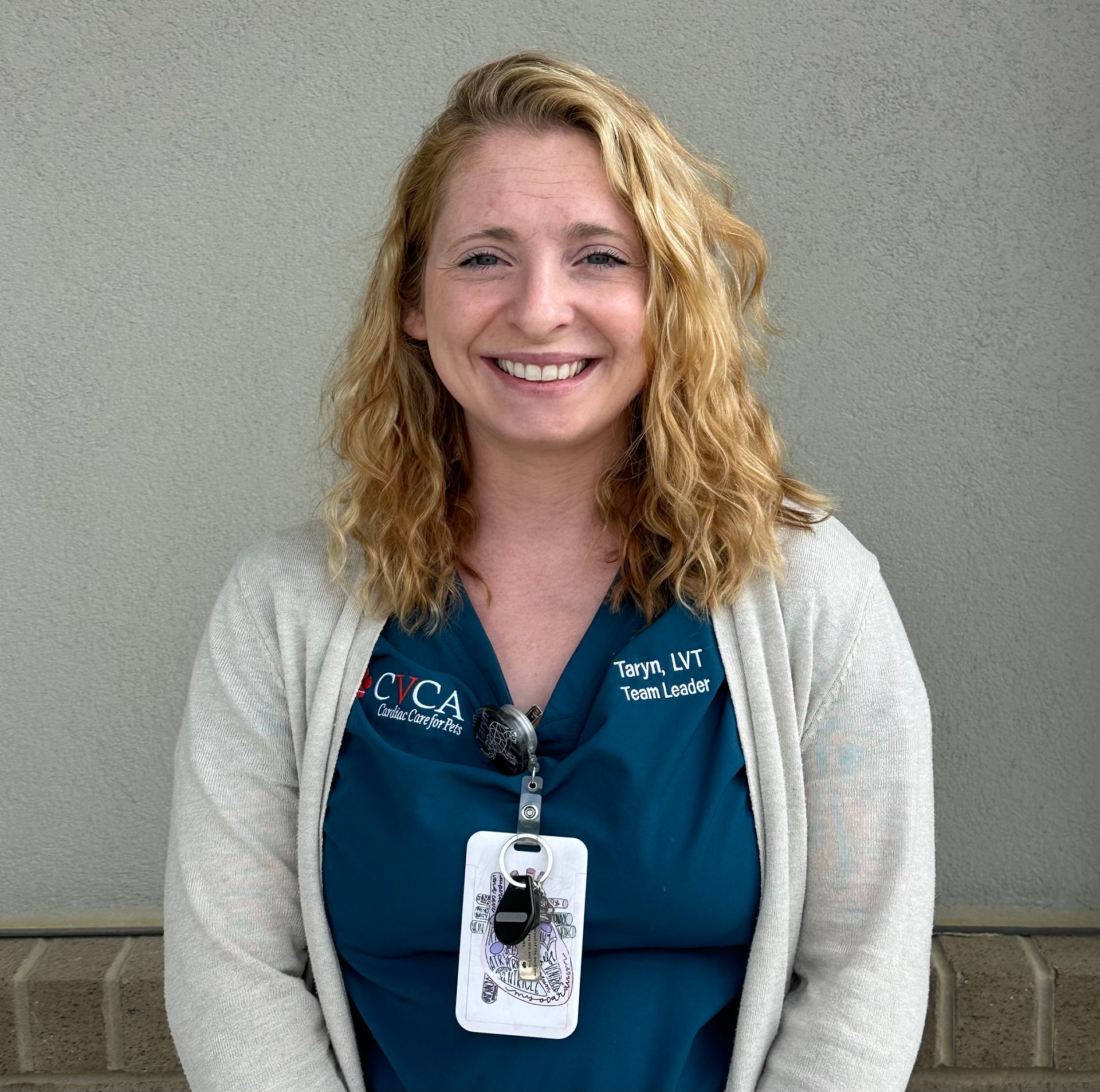
Taryn Powell
LVT
Review of Cardiac Therapies for Veterinary Technicians and Cardiac Medications
ECG Interpretation
Anesthesia and Cardia Disease
-
Session Description
ECG Interpretation
This session will give Veterinary Technician’s a full overview of all things ECG. We will be discussing the heart’s conduction system, proper positioning for obtaining ECGs, causes for arrhythmias, and various common arrhythmias that are seen. The purpose of this session is to have Veterinary Technicians comfortable with the various types of arrhythmias and what we generally use to treat them.
Cardiac Therapies for Veterinary Technicians and Common Cardiac Medications
In this session we will discuss clinical signs, diagnosis, treatment, and goals of cardiac therapy in patients with cardiac disease. The goal of this lecture is to give Veterinary Technicians a better understanding of cardiac disease management and cardiac medications. We will overview all common cardiac medications that we use and discuss their primary usage/mechanism of action. Having a better understanding of these things will help improve survival and quality of life to our patients.
Anesthesia and Cardiac Disease
In this session we will be reviewing commonly used pre-medication/induction agents and their effects on the cardiovascular system. We will go through specific cardiac disease processes and options to consider when anesthetizing these patients. The goal of this lecture is to make Veterinary Technician’s more confident with anesthesia in cardiac patients and to overview the risk vs. benefit depending on the anesthetic procedure.
-
Speaker Bio
Taryn has been dedicated to veterinary medicine since 2015. She started her career as a veterinary assistant in primary care but quickly realized that she craved more knowledge and went on to advance in Internal Medicine. IMED is where she realized an overwhelming interest in complex disease processes as well as endoscopic procedures. This driving force pushed her further into growing her knowledge in all aspects of veterinary medicine, which she expanded by becoming well rounded in the areas of Emergency and Critical Care. Taryn went on from there to spend 6 years with CVCA, Cardiac Care for Pets, where she reached her first major goal of obtaining her license to practice as a Veterinary Technician in 2022. During her time with CVCA, she stepped into her first leadership role as Hospital Manager while continuing to maintain certifications in RECOVER basic and advanced life support, Fear-Free handling and Pet Loss Bereavement. She has worked alongside the cardiologists at CVCA to grow her knowledge base in cardiac diseases, performing echocardiograms, and interpreting ECGs. Her dream is to become a Veterinary Technician Specialist in Cardiology one day!
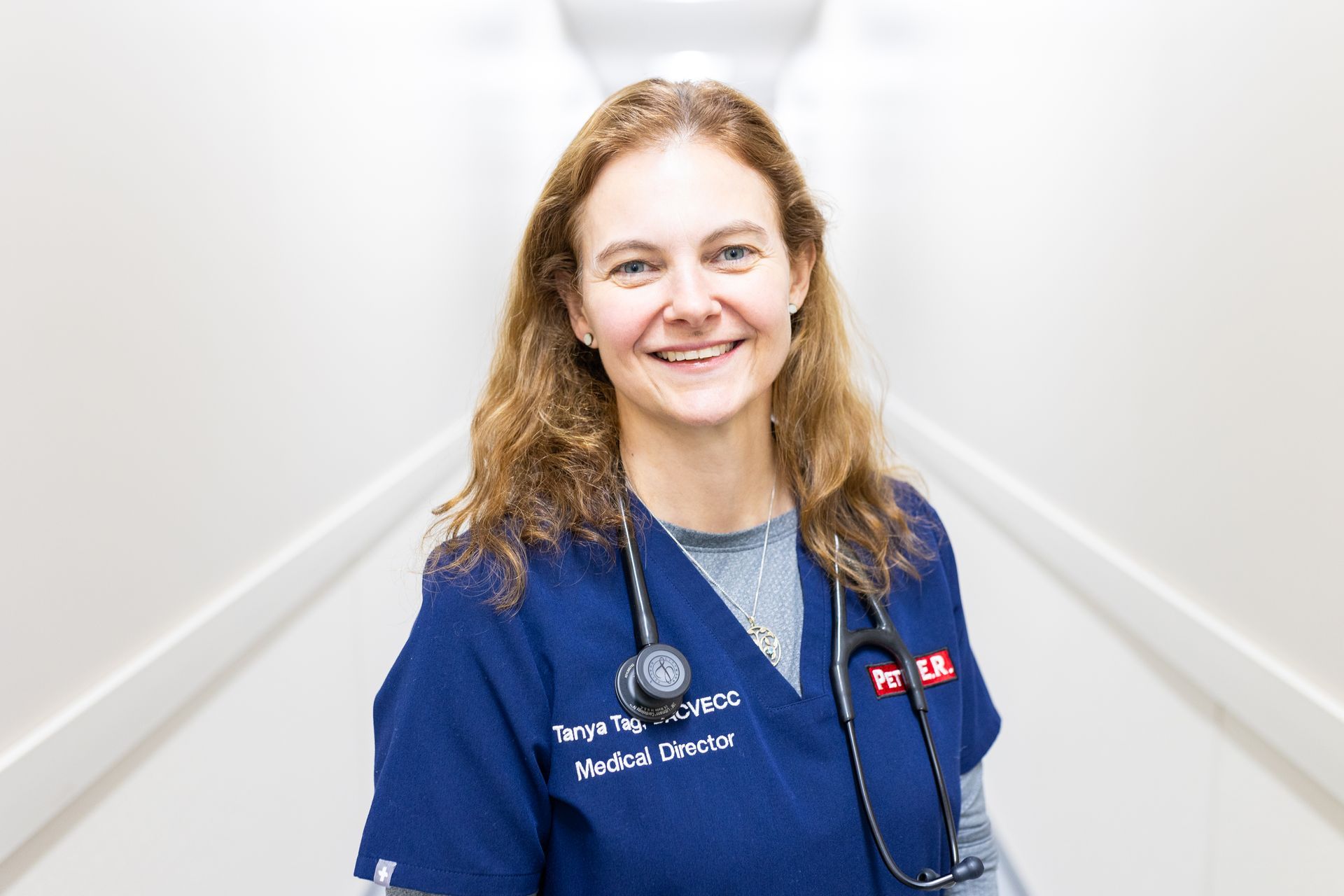
Tanya Tag
DVM, DACVECC
Bloody Diarrhea in the ER
Evaluation and Stabilization of Respiratory Emergencies for Transport
Respiratory Disease in Pediatric Patients
-
Session Description
Bloody Diarrhea in the ER
This talk starts with an overview of small vs large bowl diarrhea before diving deeper in specifics regarding hemorrhagic diarrhea. The change in nomenclature from HGE to AHDS, etiologies, diagnostics, and possible treatment options are all covered. The evidence regarding use of Metronidazole in these cases will be explored.
Evaluation and Stabilization of Respiratory Emergencies for Transport
This talk discusses the difficulties encountered in transporting small animals in respiratory distress. It breaks the challenge down by identifying the underlying cause of respiratory distress and therapies for each that may improve patient morbidity during transport. Procedures such as temporary tracheostomy, thoracocentesis, thoracostomy tube placement, nasal O2 placement, and home made oxygen cages are covered. Options and doses for sedation are included when applicable.
Respiratory Disease in Pediatric Patients
An overview of common causes of respiratory distress in puppies and kittens. This includes congenital and non- congenital causes, clinical signs, diagnostic work up, and treatment options.
-
Speaker Bio
Dr. Tanya Tag is a Baltimore native and grew up in the surrounding area horseback riding, attending Center Stage, and eating steamed crabs. She graduated from Garrison Forest School in Owings Mills and went on to ride for Marist College in the Hudson Valley obtaining her BS in Biology. After graduation she went on to Virginia-Maryland Regional Collage of Veterinary Medicine where she originally tracked government corporate before finding her true love, small animal emergency. This and meeting her husband, brought her to Flordia where she ultimately pursued a residency in Small Animal Emergency and Critical Care under the mentorship of Dr. Tom Day, DACVECC, DACVAA and Dr. Ron Lyman, DACVIM. Her professional interests include teaching, respiratory diseases, RECOVER CPR, and the management of sick urinary obstructed felines. Dr. Tag is currently Medical Director and internship coordinator (a program she started in 2015) of the Pet+ER in Columbia and Hunt Valley, Maryland. Her current hobbies include spending time with family at their various sporting events, running, and enjoying a great meal with friends or family.
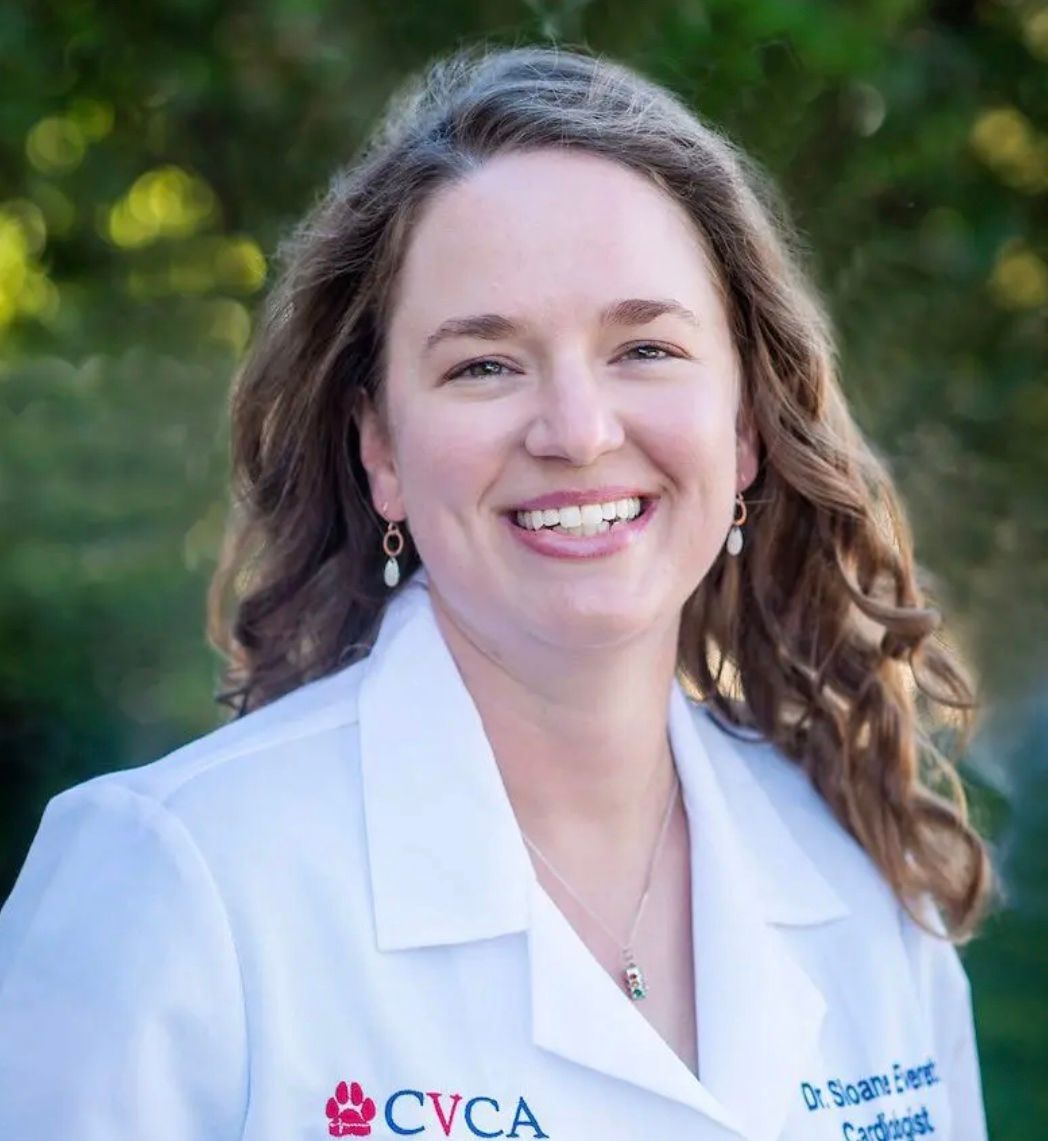
Sloane Everett
DVM, DACVIM (Cardiology)
Management of Canine CHF and Updates on Pimobendan
The Coughing Canine
Common Cardiac Disease in Cats
-
Session Description
Management of Canine CHF and Updates on Pimobendan
This session will focus on acute and chronic management of canine heart failure from the most common heart diseases. We will talk about the when and why of commonly used cardiac therapies, dose adjustments, and side effects. We will also talk about the use in pimobendan in canine patients with and without congestive heart failure.
The Coughing Canine
This session will focus on the diagnostic evaluation and management of coughing in dogs. We will primarily focus on management of coughing in cardiac patients but will review other etiologies of coughing and common therapies.
Common Cardiac Disease in Cats
This session will focus on feline cardiac disease, including screening, diagnosis, and management. This will include management of asymptomatic and symptomatic cardiac disease in cats.
-
Speaker Bio
Dr. Everett graduated from the University of Tennessee knowing she was pursuing cardiology. Her training was completed at a private practice in Florida prior to movimg to the mid-Atlantic. She has worked for CVCA since 2021 and has special interest in intervent6ional cardiology.

Kathryn McDaniel
RVT
Pain Protocols and How They Impact Anesthesia Before, During, and After
Induction Agents and How They Impact Gas Anesthesia
Monitoring Monitors: You're Seeing the Past. How to Prep for the Future
-
Session Description
Pain Protocols and How They Impact Anesthesia Before, During, and After
This will talk about how to create a multimodal approach to anesthesia effectiveness. The use of NSAIDs, and Local blocks prior to surgery. How to choose Opioids for effectiveness and longevity. The use of Maropitant and the use of gabapentin for post operative pain.
Induction Agents and How They Impact Gas Anesthesia
This session will discuss the benefits of using the various different types of induction agents and their relation to inhalant anesthesia.
Monitoring Monitors: You are Seeing the Past. How to prep for the future.
In this session we will be going over anesthetic monitoring and the importance of reading and understanding the multi-parameter monitors. Knowing when to react and correct abnormalities during the anesthesia period.
-
Speaker Bio
Hello, my name is Kat, LVT. I have a Bachelors in Journalism and Biology from Old Dominion University. I started out working as a PR specialist for the Humane Society of the United States where I realized I really wanted to work hands-on with animals. In 2014, I started as a Veterinary assistant at a small exotic animal practice in Virginia Beach. Two years later, I decided to attend Northern Virginia Community College to further my career as a Licensed Veterinary Technician. I graduated with my Associates Degree in Veterinary Technology in 2019 and have since enjoyed working with dogs, cats, and exotic animals. I have fallen in love with the emergency and urgent care sectors of the field as well as anesthesia and nutrition. I currently work full time in a small animal clinic in Virginia Beach, where I am continuously challenged and expanding my skills. I am ruled by two feline friends, Maggie and Minerva, as well as an Australian Shepard named Foster. Fun Facts about me: I love whale sharks. They just might be my absolute favorite animal in the world! I also enjoy reading in my spare time, and am currently reading Tower of Dawn by Sarah A. Maas.

Kendall Taney
DVM, AVDC Diplomate, AVDC Fellow
Feline Gingivitis/Somatitis
Difficult Extractions
Tooth Resorption
-
Session Description
Stomatitis
Review of suspected etiology, current treatment recommendations, and options for refractory stomatitis.
Tooth Resorption
Review of canine vs. feline tooth resorption, use of dental radiographs to diagnose and stage, and what extraction techniques should be used
Difficult Extractions
Tips and tricks for those challenging teeth: canines, mandibular M1, broken roots, and resorbing teeth.
-
Speaker Bio
Kendall Taney is a Diplomate of the American Veterinary Dental College and an AVDC Fellow, Oral and Maxillofacial Surgery. She is the owner of the Center for Veterinary Dentistry and Oral Surgery in Gaithersburg, Maryland. She attended Virginia Tech and completed general and surgical internships prior to her dentistry residency. Her special interests include maxillofacial reconstruction, oncologic surgery, and palate surgery.
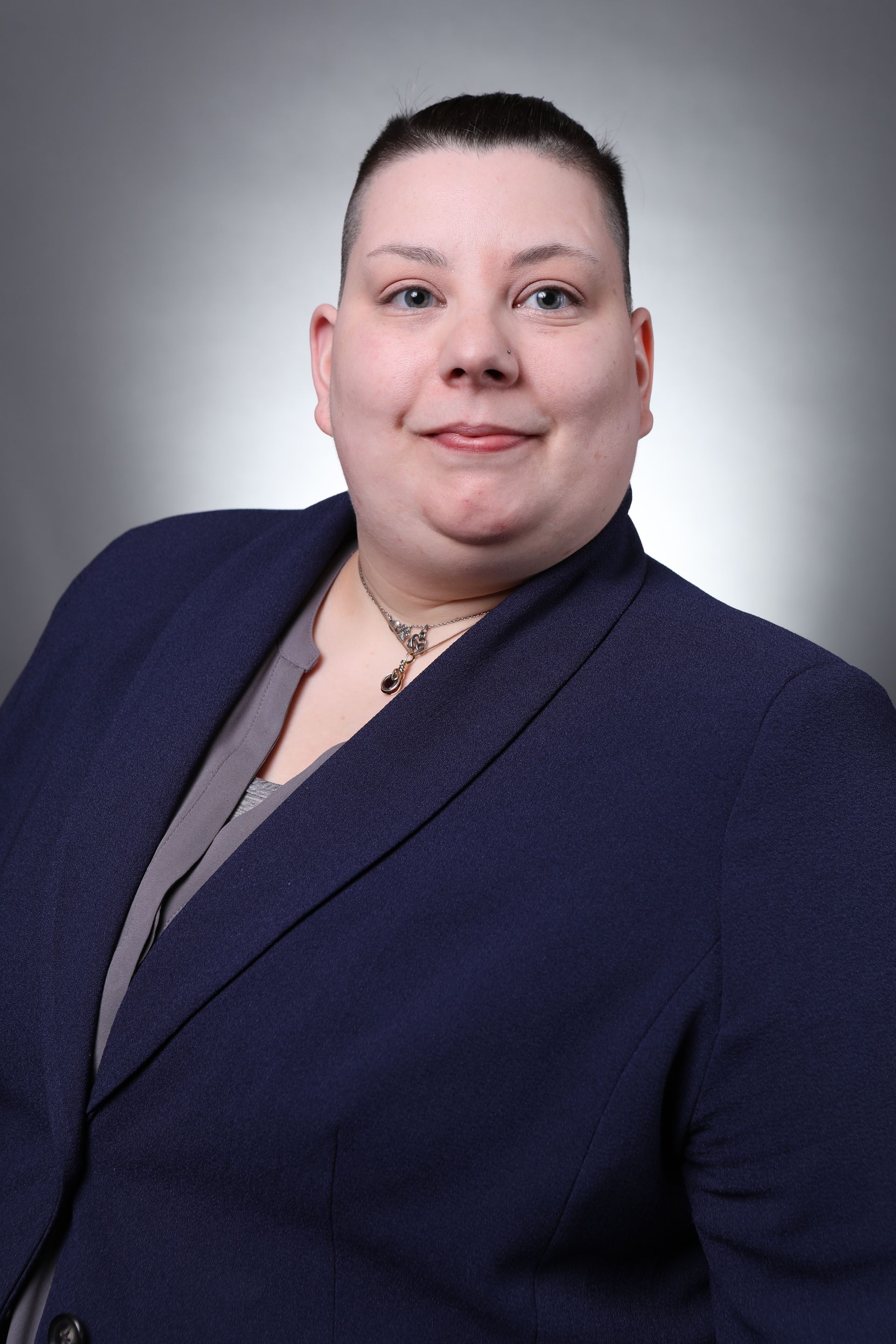
Ashley Nichols
DVM
Patient Safety and Hospital Team Impact
Genetic Testing and Genetic Disorders in Preventative Practice
-
Session Description
Patient Safety and Hospital Team Impact
This presentation discusses the importance of patient safety in providing quality veterinary care. Through creating a culture of safety, teams become more cohesive and collaborative as well as improving the patient experience. Discover how to build this culture in your teams, the benefits of a strong safety culture and resources to support your journey.
Genetic Testing and Genetic Disorders in Preventative Practice (2 hours)
This presentation discusses the ease and importance of implementing genetic testing as apart of preventative care through the use of Wisdom Panel Testing. As implementing as apart of new pet exams, providers are able to better assess risks and prognosis of particular disorders. Will discuss the top disorders seen nationwide with a few case presentations.
-
Speaker Bio
Dr. Ashley I Nichols DVM, is the outgoing president of the MDVMA, Continuing Education Committee Chair and Lead veterinarian at Banfield Pet Hospital of Arundel Mills. Dr. Nichols has been involved with veterinary medicine since 2008, receiving their Bachelors in Veterinary Technology in 2011 from Becker College in Massachusetts. They graduated from Ross University College of Veterinary Medicine in 2015, after spending their clinical year at Oklahoma State University. After graduation they worked in West Virginia until joining Banfield in June of 2016. Since joining Banfield, they have worked at multiple locations until joining the Arundel Mills location in April of 2020. Dr. Nichols has been very active with the Maryland Veterinary Medical Association (MDVMA).
Through their volunteer work with the MDVMA, Dr. Nichols has been helping plan continuing education for Maryland veterinarians and technicians.
They have even testified on behalf of Maryland veterinarians, animal welfare and public health in front of Annapolis legislators.

KimberlyAnn Mackey
MS, CVPM
The 3 S's of Hiring - Savvy, Smart, and Secure
De-escalation and Verbal Communication Part 1
De-escalation and Verbal Communication Part 2
-
Session Description
The 3 S’s in Hiring – Savvy, Smart, and Secure
Will discuss how to be smart, savvy and secure in hiring, especially during a technician and veterinarian shortage. Why and when you need to hire, where to look or advertise for potential employees. We will discuss some tools to use when hiring and some ideas on how to keep them at the hospital. What type of employee is best for the hospital and team – don’t just hire to hire. Protecting your hospital and team members from toxic employees and how to deal with them. We will discuss background checks, drug testing, and probationary periods.
Tools/Resources Attendees will gain from this program:
- Where and when to look for a new employee
- How to use social media to hire
- How to protect hospital and staff from toxic employees
- Resources to use when hiring – background checks, drug testing, and probationary periods
De-escalation and Verbal Communication
Discuss how to identify an irate client or employee before the situation escalates. Verbal de-escalation and effective communication is a type of communication intervention. It can be used for people who may be at risk for aggressive or emotional behaviors. By using a calm language, along with other communication techniques, to diffuse, re-direct, or de-escalate a conflict situation. It is important for staff to have good communication skills and a strong sense of self-awareness to manage any personal provocation, emotional challenges and belittling that often accompany such emotionally charged encounters.
Tools/Resources Attendees will gain from this program:
- Discuss and define the concept of verbal de-escalation.
- Learn strategies to reduce the risk of situations becoming dangerous.
- Apply verbal de-escalation techniques and resolution strategies by using effective communication skills.
- Help staff to recognize a situation before it becomes an issue and what to do about it.
- Practice skill drills for fast pace environments to help deal with conflict.
-
Speaker Bio
Kim is a Certified Veterinary Practice Manager (CVPM) with over 15 years of experience in the veterinary field. Starting as a receptionist, she worked her way up to Practice Manager. Alongside her veterinary career, she boasts 30 years of experience in the Criminal Justice field, where she recently retired. For 22 of those years, she served as a State Parole Supervisor, drawing on her insights to enhance safety and awareness in the veterinary world.
Kim attributes much of her success to her background in criminal justice, which provides her with a unique perspective in the veterinary field. Currently, she manages a farm, utilizing her skills in de-escalation to maintain peace among both humans and animals.
Education is a passion for Kim, who firmly believes in its role in fostering a positive work environment. She shares her knowledge by speaking at veterinary clinics, manager groups, and conferences on various topics close to her heart. Additionally, she serves as an Adjunct Professor at two local universities, bringing over a decade of teaching experience to the table. Since 2021, Kim has served as a Director on the CVPM Board of Directors.
Thanks to her diverse background, Kim has the expertise to address a wide range of subjects. She maintains a fulfilling work/life balance and is eager to continue sharing her knowledge, experiences, and techniques with the veterinary community.
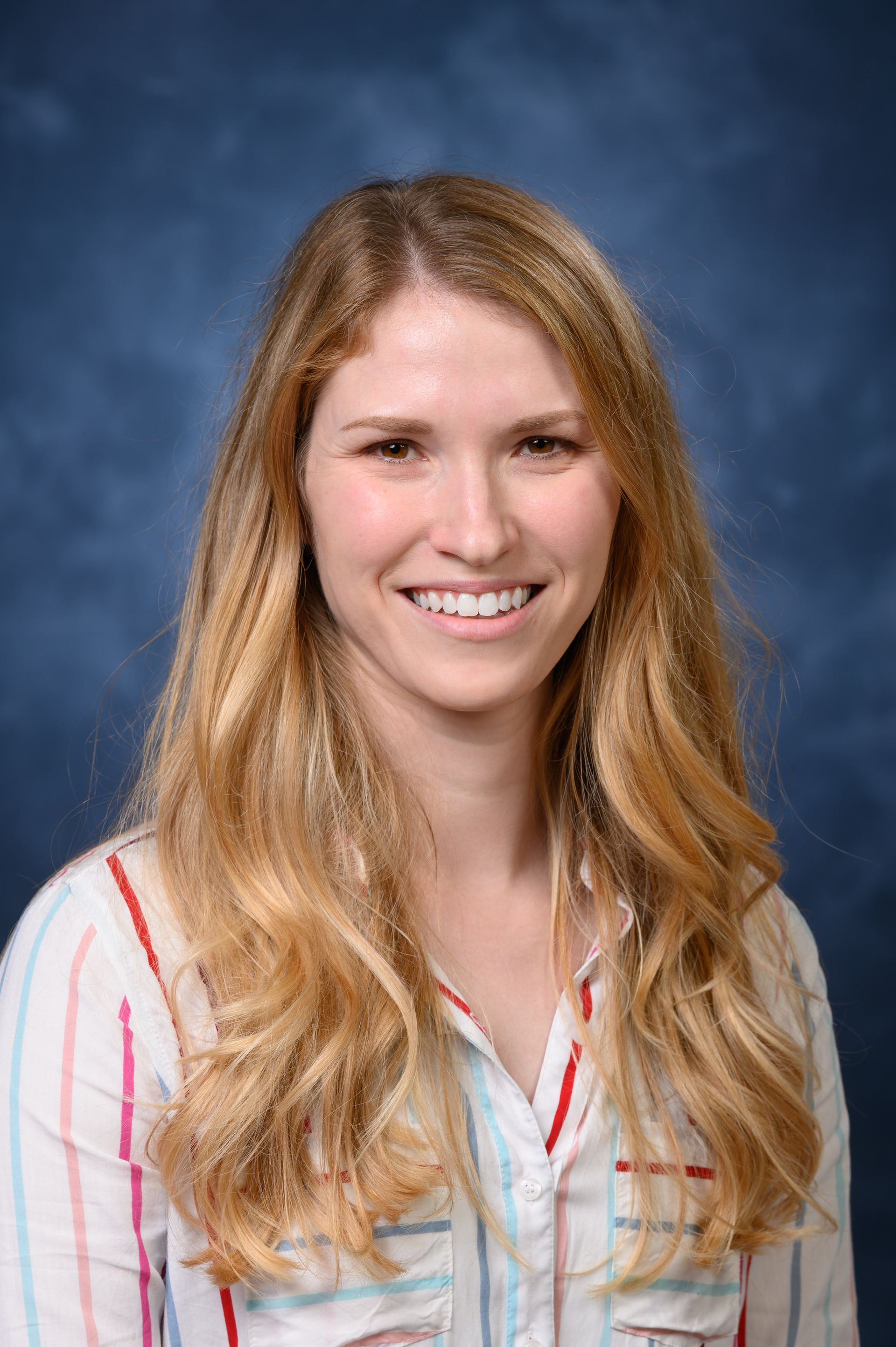
Elsa Ludwig
DVM, MS, CVA, DACVS-LA
Colic Surgery
Septic Synovial Structures
When to Refer Colic - U/S Assessment
-
Session Description
Colic Surgery
This session will go through recent updates with colic surgery, procedures, prognoses, and post-operative complications.
Septic Synovial Structures
Wounds over joints are a huge fear for many equine practitioners. This session will discuss recent updates regarding septic synovial structures, diagnosis and management in the field, hospital management, prognosis, and complications.
When to Refer Colics, Ultrasound Assessment
A review of diagnosing and treating colics in the field, FLASH ultrasound, and when to refer colics into a hospital for further assessment and care.
-
Speaker Bio
Dr. Ludwig graduated with a DVM from the University of Wisconsin in 2012, received her certification in veterinary acupuncture from the Chi Institute of Traditional Chinese Veterinary Medicine, and completed a residency in Large Animal Surgery at the Virginia-Maryland Regional College of Veterinary Medicine. During her surgical residency, Dr. Ludwig received a Master of Science degree in Biomedical and Veterinary Sciences, with her research focused on equine septic arthritis. After spending several years in private practice as a board-certified large animal surgeon, she was recruited to NC State College of Veterinary Medicine to pursue her passion to become a clinician-scientist, receiving a PhD in Comparative Biomedical Sciences. Dr. Ludwig currently works at NC State as an Equine Soft Tissue Surgeon and an Equine Emergency and Critical Care Surgeon while performing clinically based research. Dr. Ludwig’s special interests include equine gastrointestinal surgery, advanced equine dentistry, and the surgical care of small ruminants and pet pigs.
